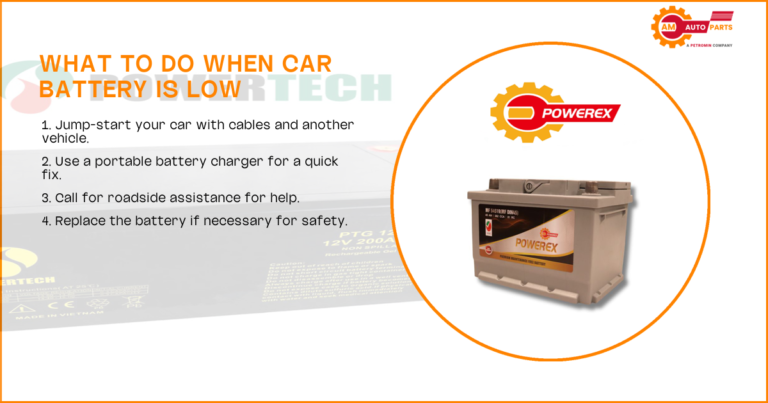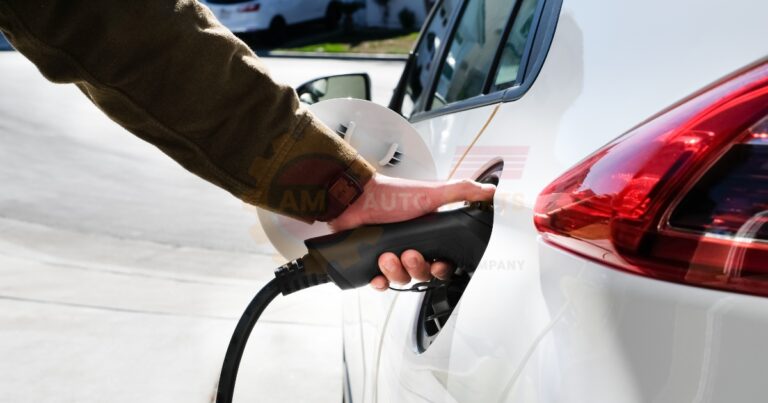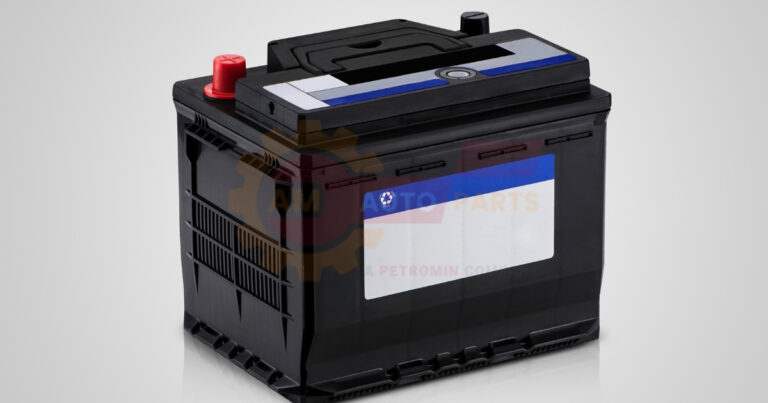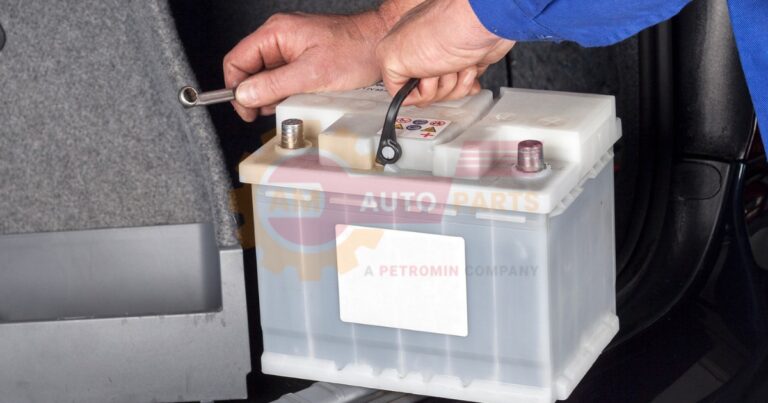How to Disconnect Car Battery Safely and Install Car Battery Safely
Handling a car battery might seem daunting, but with the right guidance, it can be a straightforward task. This guide will walk you through the steps to disconnect and install a car battery safely, ensuring you avoid common pitfalls and maintain your vehicle’s performance.
Safety Considerations for Car Battery Handling
When dealing with car batteries, safety should always be your top priority. Car batteries contain sulfuric acid and can produce hydrogen gas, which is highly flammable. Therefore, understanding the risks and taking necessary precautions is crucial.
Protective Equipment for Battery Work
Before you begin, ensure you have the right protective gear. Wearing safety goggles and gloves can protect you from accidental acid spills and electrical shocks. It’s also wise to wear long sleeves and pants to minimize skin exposure.
- Safety goggles to protect your eyes from acid splashes.
- Rubber gloves to prevent skin contact with battery acid.
- Long-sleeved clothing to cover exposed skin.
Workspace Preparation
A well-prepared workspace can make the process smoother and safer. Ensure your vehicle is parked on a flat surface and the ignition is turned off. Keep the area well-ventilated to disperse any hydrogen gas that may be released.
- Park the car on a level surface.
- Turn off the ignition and remove the keys.
- Ensure the workspace is well-ventilated.
Steps to Disconnect a Car Battery Safely
Disconnecting a car battery involves a few critical steps. Following these steps in the correct order is essential to prevent electrical shorts and other hazards.
Locating the Battery
The first step is to locate the battery in your vehicle. Most car batteries are found under the hood, but some may be in the trunk or under the rear seat. Consult your vehicle’s manual if you’re unsure.
- Check under the hood for the battery.
- Refer to the vehicle manual for battery location.
- Ensure the battery is easily accessible.
Identifying Positive and Negative Terminals
Once you’ve located the battery, identify the positive and negative terminals. The positive terminal is usually marked with a plus sign (+) and may have a red cover, while the negative terminal is marked with a minus sign (-).
- Look for the plus (+) sign on the positive terminal.
- Identify the minus (-) sign on the negative terminal.
- Note the color coding: red for positive, black for negative.
Proper Order of Terminal Disconnection
Disconnecting the terminals in the correct order is crucial to avoid electrical shorts. Always disconnect the negative terminal first, followed by the positive terminal. This reduces the risk of a short circuit.
- Disconnect the negative terminal first.
- Follow with the positive terminal.
- Use a wrench to loosen the terminal clamps.
Proper Car Battery Removal Techniques
Removing the battery requires careful handling to avoid damage to the battery or your vehicle. Follow these steps to ensure a smooth removal process.
Loosening Battery Hold-Down Clamps
Most batteries are secured with hold-down clamps. Use a wrench to loosen these clamps, ensuring the battery is free to be lifted out.
- Locate the hold-down clamps securing the battery.
- Use a wrench to loosen the clamps.
- Ensure the battery is not obstructed by any cables.
Lifting and Removing the Battery
Once the clamps are loosened, carefully lift the battery out of its tray. Batteries can be heavy, so use both hands and lift with your legs to avoid injury.
- Use both hands to lift the battery.
- Lift with your legs, not your back.
- Place the battery on a stable surface.
Installing a New Car Battery Safely
Installing a new battery is the reverse of removal but requires equal care to ensure proper function and safety.
Cleaning Battery Tray and Cables
Before installing the new battery, clean the battery tray and cables. Use a mixture of baking soda and water to neutralize any acid residue and a wire brush to remove corrosion.
- Mix baking soda and water for cleaning.
- Use a wire brush to clean cable ends.
- Ensure the tray is dry before placing the new battery.
Positioning the New Battery
Place the new battery in the tray, ensuring it is oriented correctly. The positive and negative terminals should align with the corresponding cables.
- Position the battery with terminals facing the correct direction.
- Ensure the battery sits flat in the tray.
- Check that the battery is stable and secure.
Securing Battery Hold-Down Clamps
Once the battery is in place, secure it with the hold-down clamps. Tighten the clamps to prevent the battery from moving while driving.
- Align the hold-down clamps over the battery.
- Use a wrench to tighten the clamps securely.
- Double-check that the battery is immobile.
Reconnecting Car Battery Terminals Correctly
Reconnecting the battery terminals is a critical step that requires attention to detail to ensure a secure connection.
Proper Order of Terminal Connection
When reconnecting the terminals, always connect the positive terminal first, followed by the negative terminal. This order helps prevent accidental short circuits.
- Connect the positive terminal first.
- Follow with the negative terminal.
- Use a wrench to tighten the terminal clamps.
Ensuring Tight Connections
Ensure that the terminal connections are tight and secure. Loose connections can lead to poor electrical performance and potential safety hazards.
- Check that the terminal clamps are tight.
- Ensure there is no movement in the connections.
- Test the battery by starting the vehicle.
What tools do I need to disconnect a car battery?
To disconnect a car battery, you will need a few basic tools. A wrench or socket set is essential for loosening the terminal clamps and hold-down bolts. Additionally, having a wire brush on hand can help clean any corrosion from the terminals. It’s also helpful to have a pair of safety goggles and gloves for protection.
Common Mistakes to Avoid When Handling Car Batteries
Handling car batteries requires attention to detail to avoid common mistakes that can lead to safety hazards or damage.
Incorrect Terminal Identification
One common mistake is incorrectly identifying the battery terminals. Always double-check the positive and negative markings before disconnecting or reconnecting the battery to prevent electrical shorts.
- Verify terminal markings before proceeding.
- Use color coding as a guide: red for positive, black for negative.
- Double-check connections before starting the vehicle.
Neglecting to Use a Memory Saver
When disconnecting a car battery, using a memory saver can prevent loss of electronic settings. This device maintains power to the vehicle’s computer, preserving radio presets and other settings.
- Use a memory saver to maintain electronic settings.
- Connect the memory saver before disconnecting the battery.
- Ensure the device is compatible with your vehicle.
Can I disconnect a car battery while the engine is running?
Disconnecting a car battery while the engine is running is not recommended. Doing so can cause electrical surges that may damage the vehicle’s electronic systems. Always turn off the engine and remove the keys before disconnecting the battery to ensure safety.
Signs It’s Time to Replace Your Car Battery
Recognizing the signs of a failing battery can help you avoid unexpected breakdowns and maintain your vehicle’s reliability.
Battery Age and Performance
Car batteries typically last between three to five years. If your battery is within this age range and you’re experiencing starting issues, it may be time for a replacement.
- Check the age of your battery.
- Monitor for slow engine cranking.
- Consider replacement if the battery is over three years old.
Visual Indicators of Battery Wear
Physical signs of battery wear include corrosion on the terminals, a swollen battery case, or leaking fluid. These indicators suggest it’s time to replace the battery.
- Inspect for corrosion on terminals.
- Look for swelling or bulging in the battery case.
- Check for any signs of leaking fluid.
How long does it take to disconnect and reconnect a car battery?
The process of disconnecting and reconnecting a car battery typically takes about 30 minutes. This time frame includes locating the battery, disconnecting the terminals, removing the old battery, and installing the new one. However, the time may vary depending on your experience and the vehicle’s design.
Proper Car Battery Maintenance for Longevity
Regular maintenance can extend the life of your car battery and ensure reliable performance.
Regular Cleaning and Inspection
Regularly clean the battery terminals and inspect for signs of wear. This helps prevent corrosion and ensures a strong electrical connection.
- Clean terminals with a wire brush.
- Inspect for signs of corrosion or damage.
- Schedule regular battery checks.
Checking Electrolyte Levels (for non-sealed batteries)
For non-sealed batteries, checking the electrolyte levels is crucial. Low levels can lead to reduced battery performance and lifespan.
- Check electrolyte levels monthly.
- Top up with distilled water if necessary.
- Avoid overfilling to prevent spills.
Understanding Car Battery Voltage and Health
Monitoring your battery’s voltage can provide insights into its health and performance.
Normal Operating Voltage Range
A healthy car battery should have a voltage range between 12.4 and 12.7 volts when fully charged. Regularly checking the voltage can help you identify potential issues early.
- Measure voltage with a multimeter.
- Ensure voltage is within the normal range.
- Investigate any significant deviations.
Using a Multimeter for Battery Testing
A multimeter is a valuable tool for testing battery health. It can measure voltage and help diagnose potential issues before they become serious problems. Battery charging techniques Different ways to fill up batteries with power like using a wall plug or special chargers that work faster or protect the battery while charging Home battery adaptation helps families store extra electricity at home This stored power can be used when needed saving money on energy bills
Battery voltage range The Push start automobile Cars with
Car battery performance declines when batteries get old or are used a lot This can make it harder for cars to start or run electrical parts properly Automotive power choices include gas engines electric motors and hybrid systems These options give drivers different ways to power their cars and trucks
Automotive BMS importance Automotive BMS helps keep car batteries safe and working well It makes sure electric cars can go far and last a long time Battery charging problems can make your device stop working
Vehicle power optimization helps cars use less fuel and go farther It makes engines work better so vehicles can be more efficient
- Set the multimeter to measure DC voltage.
- Connect the probes to the battery terminals.
- Compare readings to the normal voltage range.
Environmental Considerations for Battery Disposal
Proper disposal of old car batteries is essential to protect the environment and comply with regulations.
Recycling Old Car Batteries
Car batteries are highly recyclable, with most components being reusable. Recycling helps reduce environmental impact and conserves resources.
- Locate a local recycling center.
- Ensure the battery is recycled properly.
- Support environmental sustainability.
Proper Handling of Battery Acid
Battery acid is hazardous and requires careful handling. If you encounter a leak, neutralize the acid with baking soda and clean the area thoroughly.
- Use baking soda to neutralize spills.
- Wear protective gear when handling acid.
- Dispose of acid according to local regulations.
According to the U.S. Environmental Protection Agency, 99% of lead-acid batteries are recycled, making them one of the most recycled consumer products. This highlights the importance of responsible battery disposal and recycling efforts
FAQ’s
Why is it important to disconnect a car battery safely?
Proper disconnection prevents electrical shorts, sparks, or damage to the car’s electrical system, ensuring personal safety and avoiding costly repairs.
What tools do I need to safely disconnect a car battery?
You’ll need a wrench or socket set to loosen the battery terminal connections, and safety gloves to protect against electrical shocks or acid exposure.
Which battery terminal should I disconnect first?
Always disconnect the negative terminal first to avoid accidental short circuits while working with the positive terminal.
Can I reconnect the battery after disconnecting it?
Yes, but ensure the terminals are clean and securely connected. Reconnect the positive terminal first, followed by the negative, to restore power safely.






